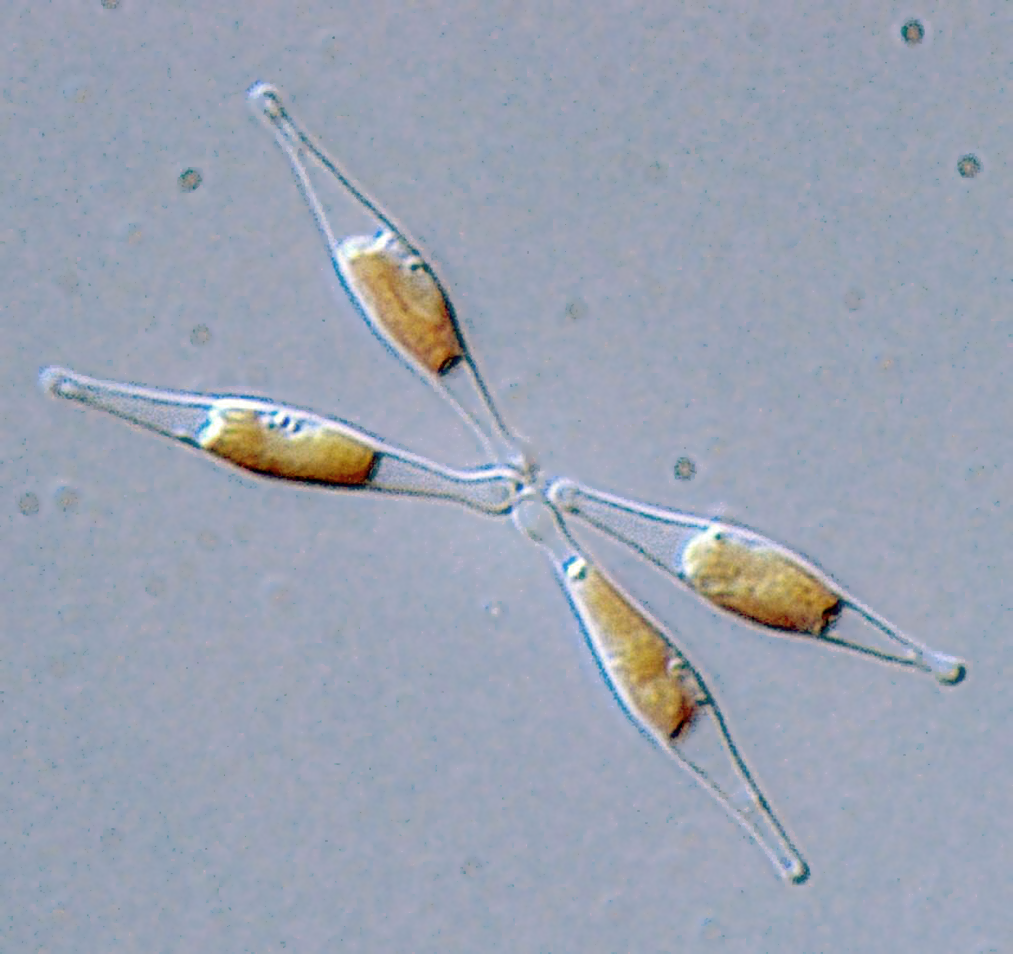|
Diadinoxanthin
Diadinoxanthin is a pigment found in phytoplankton. It has the formula C40H54O3. It gives rise to the xanthophylls diatoxanthin and dinoxanthin. Diadinoxanthin is a plastid pigment. Plastid pigments include chlorophylls a and c, fucoxanthin, heteroxanthin, diatoxanthin, and diadinoxanthin. Diadinoxanthin is a carotenoid. It is found in diatoms, along with other carotenoids like fucoxanthin and beta-carotene. Diatoms are referred to as golden-brown microalgae because of the color of their plastids and because the carotenoids mask chlorophyll-a and chlorophyll-c. Diadinoxanthin is a xanthophyll. Xanthophyll pigments are photoprotective pigments that help protect cells from harmful effects of too much light energy (light saturation). It is present in cells along with diatoxanthin (another xanthophyll). Diadinoxanthin is stockpiled in the cell to become available when needed. Thus it’s the inactive precursor of diatoxanthin, which is the active energy dissipator. See also ... [...More Info...] [...Related Items...] OR: [Wikipedia] [Google] [Baidu] |
Carotenoid
Carotenoids (), also called tetraterpenoids, are yellow, orange, and red organic pigments that are produced by plants and algae, as well as several bacteria, and fungi. Carotenoids give the characteristic color to pumpkins, carrots, parsnips, corn, tomatoes, canaries, flamingos, salmon, lobster, shrimp, and daffodils. Carotenoids can be produced from fats and other basic organic metabolic building blocks by all these organisms. It is also produced by endosymbiotic bacteria in whiteflies. Carotenoids from the diet are stored in the fatty tissues of animals, and exclusively carnivorous animals obtain the compounds from animal fat. In the human diet, absorption of carotenoids is improved when consumed with fat in a meal. Cooking carotenoid-containing vegetables in oil and shredding the vegetable both increase carotenoid bioavailability. There are over 1,100 known carotenoids which can be further categorized into two classes, xanthophylls (which contain oxygen) and carotenes (which ... [...More Info...] [...Related Items...] OR: [Wikipedia] [Google] [Baidu] |

.jpg)